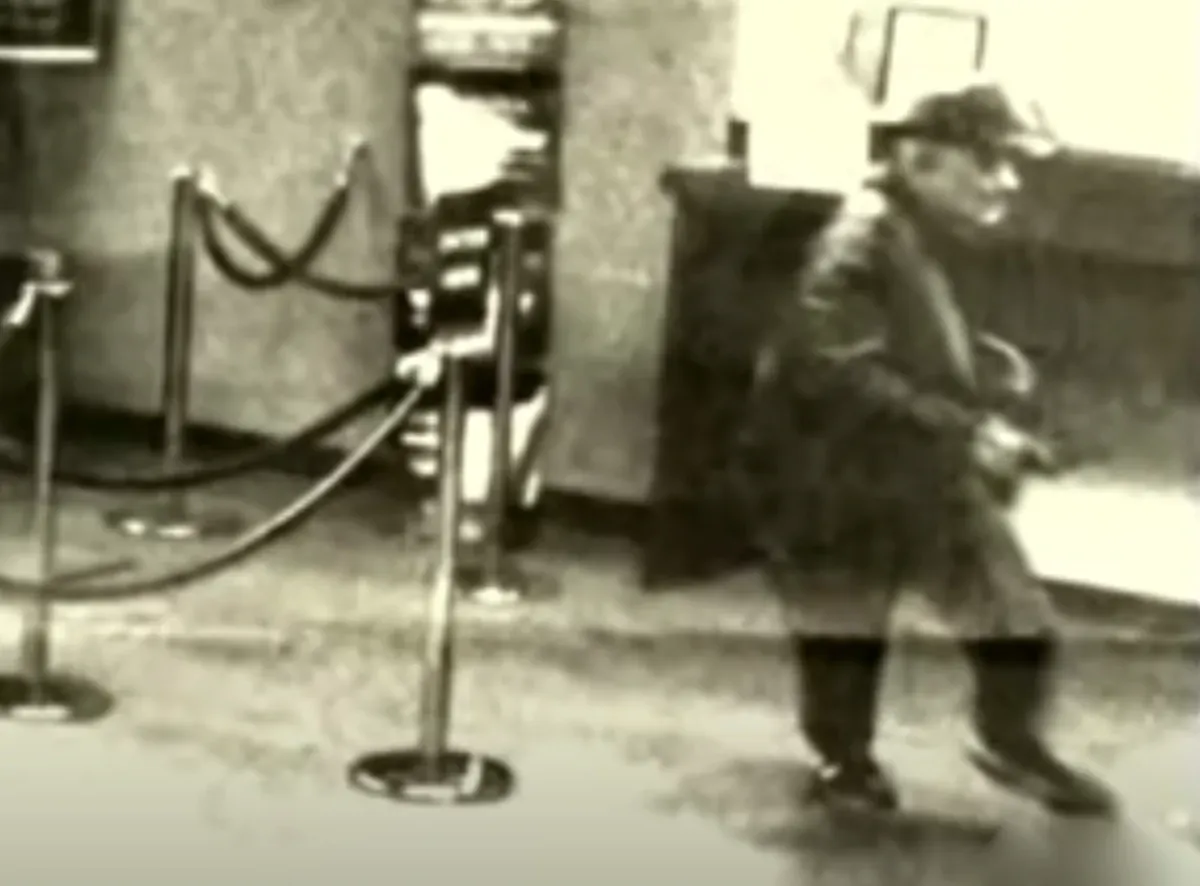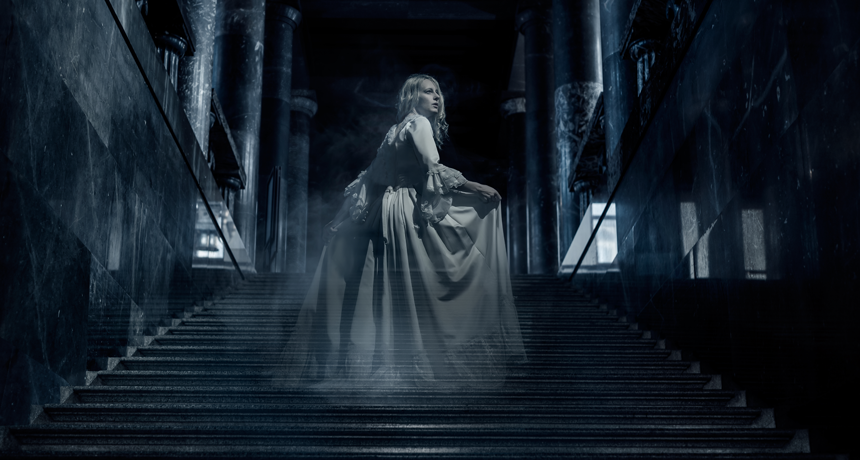He was the most prolific bank robber the US has ever seen

From Ara The Rat: "In 2001, two boys playing in the woods in Radnor, Pennsylvania, found a strange three-foot sealed PVC pipe hidden inside a concrete drain. Inside, they discovered documents relating to numerous bank robberies and instructions on how to clean a Baretta firearm. Police found a three foot deep bunker filled with more PVC pipes and waterproof containers, containing books, maps, notes on 160 banks from Virginia to Connecticut, 5 guns, 500 rounds of ammunition and 8 Halloween masks. It didn’t take long before they realized who was behind this. For almost three decades, someone had been successfully robbing banks with a professionalism that had earned grudging respect. He was the most prolific bank robber in U.S. history netting himself around $2 million, more than John Dillinger and Bonnie and Clyde combined."
Famous painter Henri de Toulouse-Lautrec invented chocolate mousse

From Tasting Table: "In addition to being a prolific painter, Henri de Toulouse-Lautrec was, as the Art Institute of Chicago puts it, gifted at representing the celebrity brand. One of his most famous works, "At the Moulin Rouge" (1892) depicts a bustling metropolitan nightlife scene that's full of electricity and the hum of the after-hours-underworld. To say that Toulouse-Lautrec had a "palette" for the decadent would be accurate. But while other artists like Picasso and Van Gogh were chasing the green fairy under the absinthe drip, Toulouse-Lautrec was using his spoon to carve into bowls of rich chocolate mousse. While it might seem like an emblem of fine dining, but it wasn't invented by a chef at all – it was created by Toulouse-Lautrec during the late 1800s. But he was less adept at naming foods. Mousse used to be called "chocolate mayonnaise."
Red dust used for art and hallucinogenic trips poisoned the ancient Iberians
/https://tf-cmsv2-smithsonianmag-media.s3.amazonaws.com/filer_public/78/e4/78e4d9e7-dfba-44d9-82be-91dd9174306f/cinnabarit_01_web.jpg)
From The Smithsonian: "Five thousand years ago, in what’s now southern Spain, a special set of women donned their ceremonial gowns, bedecked with tens of thousands of beads crafted from shell, ivory and amber, and hunched over a heap of red powder. Then they inhaled the particles, or maybe downed them mixed in an elixir. Ground from a mineral called cinnabar, the substance would have sent them into a fevered trance with tremors and delirium. On this mind-altering trip, the women may have liaised with deities and divined their society’s future—unaware that the powder’s potency came from its main elemental component: the toxic metal mercury. As they repeated these rites, the poison built up in their tissues. Millennia later, archaeologists measured mercury in the bones of these women and others from their community, revealing values orders of magnitude higher than what health experts consider tolerable today."
Editor's note: If you like this newsletter, please share it with someone else. And if you really like it, perhaps you could subscribe, or contribute something via my Patreon. Thanks for being a reader!
The haunting of Sally Morton's bordello mesmerized Louisville in 1894

From Strange Company: "In 1894-5, the Louisville Courier-Journal covered – in a remarkably matter-of-fact way – a series of bizarre occurrences taking place in the city. The fun started in November 1894, when Sallie Morton, the proprietor of what the “Courier-Journal” euphemistically called a “disorderly house,” found salt sprinkled in her yard. Subsequently, Morton found that someone had hidden in her bed a bundle of red flannel containing human hair and three severed human fingers. Clearly, someone was not overly fond of Ms. Morton. Sallie believed that “someone” was her next door neighbor Alice Tucker, who managed a rival establishment. It is not clear whether Tucker targeted Morton out of a desire to snag some of her customers, or because of simple personal spite. Whatever the reasons for Tucker’s witchery, it proved highly effective. On January 18, 1895, Morton obliged her enemy by suddenly dying."
It turns out the decimal point is 150 years older than historians first thought

From Scientific American: "The decimal point was invented around 150 years earlier than previously thought, according to an analysis of astronomical tables compiled by the Italian merchant and mathematician Giovanni Bianchini in the 1440s. Historians say that this discovery rewrites the origins of one of the most fundamental mathematical conventions, and suggests that Bianchini — whose economic training contrasted starkly with those of his astronomer peers — might have played a more notable part in the history of maths than previously realized. The results are published in Historia Mathematica. The decimal point was a step forward for humanity, enabling the ease and efficiency of calculations that underpin modern science and technology. Previously, its earliest-known appearance was said to be in an astronomical table written by the German mathematician Christopher Clavius in 1593."
Fifty years ago San Antonio suffered its own Great Train Robbery but it was a kiddie train

From Texas Public Radio: " An iconic San Antonio attraction has a darkly quirky event attached to it for all times. It happened in Brackenridge Park, on a little train that 300,000 people, primarily parents and children, ride yearly – a historic artifact that dates back to the 1950s. The train wends its way over creeks and the rolling grassy hills of the Brackenridge Golf Course. One Saturday in July of 1970 though, the experience that families relish turned downright weird. Two men stopped the train and began to rob the passengers of their goods — their checkbooks, their jewelry and their money. Passengers first laughed, thinking it was an Old West re-enactment gag. But when one of the robbers put a gun to the head of a passenger, they figured out it wasn't a joke. It was the first time a train robbery had happened in Texas in 47 years."
This handbag that debuted at Paris Fashion Week is 99 percent air
Accessories brand Coperni debuted a bag at Paris Fashion Week that's made of 99% air and 1% glass. It weighs 33 grams and was constructed out of silica aerogel, which is the lightest solid on Earth.pic.twitter.com/csZ5mn3CSN
— Massimo (@Rainmaker1973) March 6, 2024
Acknowledgements: I find a lot of these links myself, but I also get some from other newsletters that I rely on as "serendipty engines," such as The Morning News from Rosecrans Baldwin and Andrew Womack, Jodi Ettenberg's Curious About Everything, Dan Lewis's Now I Know, Robert Cottrell and Caroline Crampton's The Browser, Clive Thompson's Linkfest, Noah Brier and Colin Nagy's Why Is This Interesting, Maria Popova's The Marginalian, Sheehan Quirke AKA The Cultural Tutor, the Smithsonian magazine, and JSTOR Daily. If you come across something interesting that you think should be included here, please feel free to email me.



